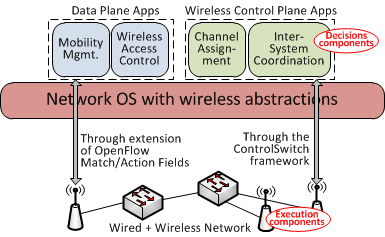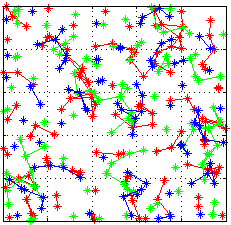 |
The aim of this ongoing project is to explore the benefits of cooperation between multiple independent networks operating on shared bands. While both the scope and application of cooperation can widely vary, we are targeting coarse-grained network-to-network cooperation in the form of exchange of information about node locations, channels, etc. The immediate application of such forms of cooperation is in the realm of 'carrier Wi-Fi' deployments where access points of multiple operators would need to operate in the same location over the same frequency.
Links: RAWNET Paper |
MobilityFirst - A mobility-centric architecture for the Internet
 |
MobilityFirst is a NSF funded Future Internet Architecture (FIA) project aimed at the design and validation of a comprehensive new architecture for the next-generation Internet. The major design goals of the MobilityFirst architecture are: mobility as the norm with dynamic host and network mobility at scale, robustness with respect to intrinsic properties of wireless medium, and trustworthiness in the form of enhanced security and privacy for both mobile networks and wired infrastructure. Since the start of the project in Sept. 2010, we have worked on several key components targeting the confluence of wireless access, mobile networks, and the Internet protocols.
Links:
MobilityFirst website,
MIT Technology Review article on FIA,
ICDCS Paper,
Sarnoff Paper,
NOMEN Paper,
WoWMoM Paper |
Capacitive Touch Communications
|
|
In this work, we designed a capacitive communication technique to input data to devices such as laptops, phones and tablets through their touchscreens. The technique exploits the capacitive touchscreens as a signal receiver, while a signal that identifies a user can be generated by a small transmitter embedded into a ring, watch, or other artifact carried on the human body. We explore two example system designs with a low-power continuous transmitter that communicates through the skin and a signet ring that needs to be touched to the screen.
Links:
Demo Video,
Mobicom Paper,
MIT
Technology Review article,
Phys.org
article |
Backhaul Self-Organizing Networks (SON) for Small Cells
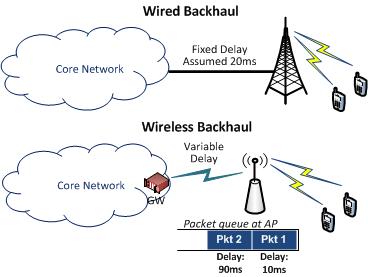 |
In a number of recent industry discussions, backhaul has been identified as the key challenge for wide-scale deployment of small cells. Backhaul connections in small cell networks are expected to be of limited capacity and implemented over a variety of L1 modalities such as millimeter wave, LOS and NLOS microwave, cable, satellite, Wi-Fi, WiMax, TV white space technologies, and LTE. This suite of new backhaul mediums presents an opportunity for innovative solutions that can leverage the varied and dynamic form of backhaul for efficient transport of small cell traffic. The aim of this work was to gain a better understanding of the backhaul challenges in small cell networks, and identify the innovation opportunities that they present.
Links: Patent application on backhaul delay estimation, Patent application on backhaul self-optimization Collaborators: Prabhakar Chitrapu, John Tomici (InterDigital) |
Delay-aware Uplink Scheduler for LTE
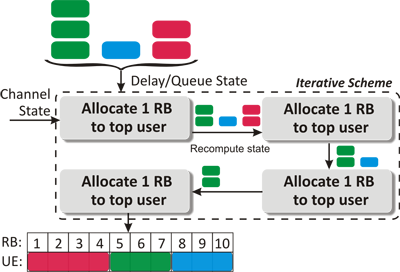 |
The aim of this project was to develop techniques for delay estimation and fast iterative scheduling policies for LTE uplink. We considered a constrained optimization problem with a concave objective function by forming a non-differentiable objective function based on packet delays. The effectiveness of our schemes for LTE was shown through detailed system simulations (based on NGMN and 3GPP evaluation methodology) which models H-ARQ, finite resource grants per sub-frame, realistic traffic, power limitations, interference, and channel fading.
[WiOpt Paper] [Slides] [Extended version on arxiv] Collaborators: Ritesh Madan, Ashwin Sampath (Qualcomm) |
Multi-radio Interference Diagnosis in the 2.4 GHz band
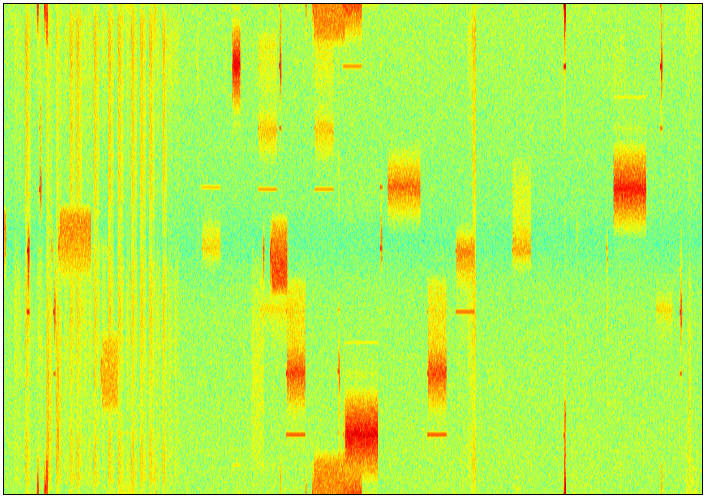 |
This work aims to characterize different types of heterogeneous interference in the 2.4 GHz unlicensed band and develop techniques to diagnose interference related problems using passive monitoring. The first part of the project consisted of extensive experimentation on the ORBIT radio grid to quantify the effects of such interference in representative small office and home environment. In the second phase, we designed a cross-layer, multi-radio interference diagnosis framework (called “spectrum MRI”) targeted towards classification and diagnosis of multi-radio interference problems using heuristic and model-based methods.
Links: MS Thesis, WCNC Paper, Slides Collaborators: Suhas Mathur, Ivan Seskar, Dipankar Raychaudhuri (WINLAB, Rutgers), Sanjoy Paul, Amitabha Das (Infosys Technologies) |
DataMiser: Predictive content caching and download scheduling to reduce mobile data usage
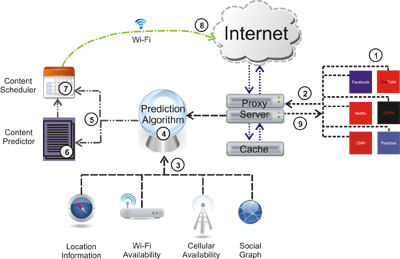 |
DataMiser is a mobile application which predicts both Wi-Fi availability and content requests from a user and uses them to pre-cache content on the mobile device over Wi-Fi, thus reducing data usage over cellular networks. The implementation consists of two key modules: content predictor and content scheduler. The content predictor takes user-specific data consumption patterns as inputs to determine the user’s future content requests. This along with historic and instantaneous spatio-temporal network availability is used by the content scheduler to schedule the download time for each piece of content.
Links: InterDigital Innovation Challenge - Finalist & Popular Choice Award, Video from GigaOM Mobilize 2012 presentation Collaborators: Samson Sequeira, Ashwin Revo (WINLAB, Rutgers) |
Triaging Twitter Feeds: A network-structure based approach
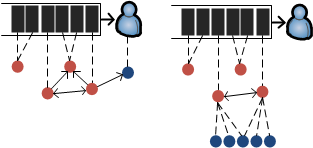 |
The aim of this work is to understand the problem of network feed cluttering by analyzing a Twitter dataset consisting of 300,000 tweets and 61 Million users. Our primary focus is on identifying distinct ‘reasons’ behind why a user might be receiving a large number of tweets in his/her feed, i.e. triaging twitter feeds. Two key techniques are proposed to de-clutter the Twitter feed - (i) thresholding for spam reduction, (ii) grouping of tweets based on network-structure.
Links: Paper Draft Collaborators: Tina Eliassi-Rad (CS, Rutgers) |
